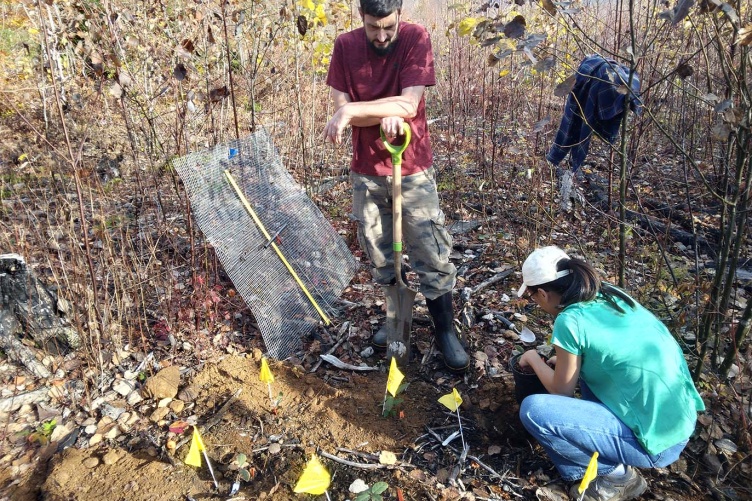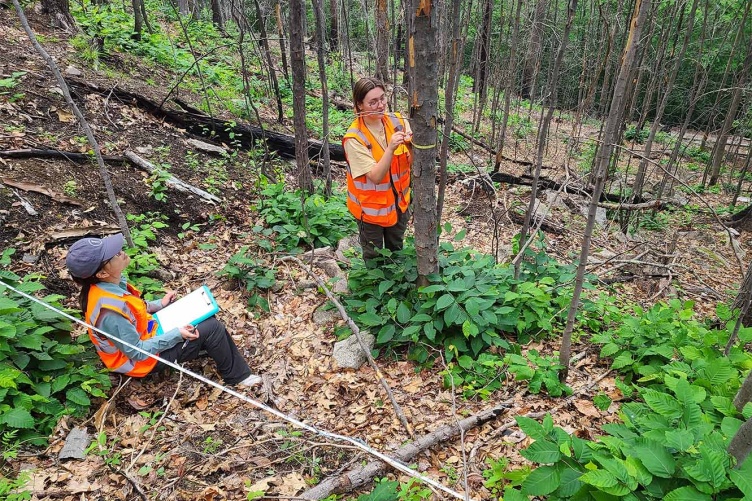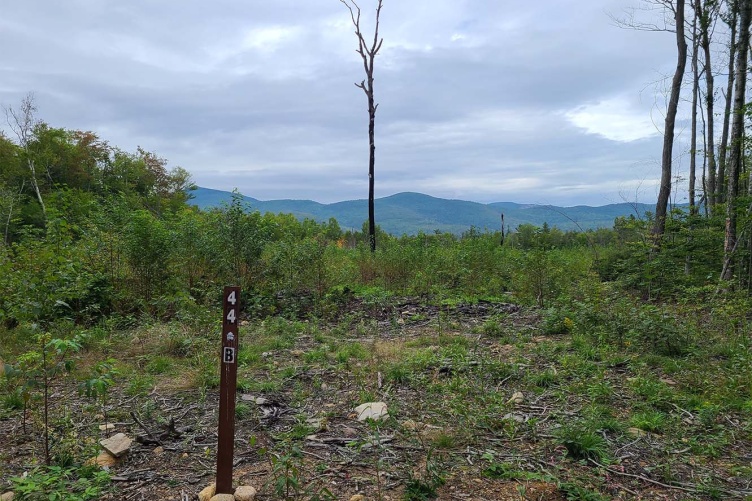Northern red oak (Quercus rubra) holds significant ecological and economic value in the Northeast, serving as a crucial wildlife habitat and a vital component of the region's timber industry. Red oak timber is highly valued for its strength, durability and aesthetic qualities, making it a preferred material in furniture making, flooring and cabinetry. It also offers an important food source – acorns – for many forest species; provides a home for birds, mammals and insects; helps photosynthesize and sequester carbon, even during periods of drought; and tolerates low-intensity ground fires among numerous other ecological benefits. However, forest managers have long recognized the difficulty of regenerating this species—growing seedlings and saplings to replace harvested trees—in New England, where it’s found in all six states.
“This region is well known for growing some of the highest quality red oak you can find...And it commands premium prices both here in the United States and in international markets.” ~ Andy Fast, Forest Industry State Specialist/Extension Professor with UNH Cooperative Extension
Research led by Matthew Vadeboncoeur, a research scientist with UNH’s Earth Systems Research Center at the Institute for the Study of Earth, Oceans, and Space, is investigating how prescribed fire could be used improve red oak regeneration and expand its range northward.
The use of prescribed fire as a forest management tool for regenerating desirable timber species is more common in parts of the country where prescribed fires are also used to prevent catastrophic wildfires. In New England, it has been used more sparingly, mostly with a focus on conserving rare species rather than managing timber producing forestland. But the practice of prescribed fire as a conservation tool dates back centuries and was commonly used by Indigenous peoples.
“There’s some skepticism among New England's forest managers whether the long-term timber benefits of prescribed burns are worth the short-term cost or inherent risk,” added Vadeboncoeur, who also serves as a research scientist with UNH’s College of Life Sciences and Agriculture. “So this study is aimed at measuring the benefits in terms of improving the health and diversity of tree seedlings and share that information out, via UNH Extension, to foster acceptance and implementation of fire-based management strategies.”
According to Andy Fast, a forest industry specialist with UNH Cooperative Extension, New Hampshire harvests upwards of 20 million feet of red oak board annually, and red oak is a timber in high demand for domestic and international markets alike.
“This region is well known for growing some of the highest quality red oak you can find,” said Fast. “And it commands premium prices both here in the United States and in international markets.”
Vadeboncoeur and Khanh Ton, a master’s student in the Natural Resources and the Environment program at UNH, are leading the study, along with co-investigators Fast, Heidi Asbjornsen, a professor in UNH's natural resources and the environment department and a scientist with the New Hampshire Agricultural Experiment Station; and Natalie Cleavitt, a senior research associate with Cornell University. The team has adopted a multifaceted approach to examining northern red oak regeneration that includes monitoring the establishment of oak seedlings and their growth in recent (2017-2021) prescribed burns in the White Mountain National Forest. The team is also using potted seedlings to isolate and study the effects of oak regeneration under controlled conditions, and they’re analyzing tree rings from oaks in forests that have a history of wildfire to determine how many mature trees germinated following the fire event.
So far, they’ve found about three times as many oak seedlings growing in stands that were both thinned and burned, versus stands that were only thinned. They’ve learned that the root collars (the area where the trunk and roots meet) are significantly greater for seedlings in burn stands, meaning that the trees grow better and more abundantly following a fire. And they’re discovering how both timing and burn intensity of fire can play a key role in oak regeneration.
“Following a burn, there’s likely reduced competition by other species for light and nutrients, allowing for more red oaks to regenerate,” explained Vadeboncoeur. “However, we’ve also seen that the acorns grown in pots in burned soil outperformed those planted in unburned soil, indicating that there might be other processes at play in the soil.”
In examining the site of a wildfire (which often burns hotter and more intense than a prescribed fire) from 2022, the scientists found numerous burned acorns on the ground, but few seedlings, resulting in other species getting a head start on regenerating. When an intense fire burns during the time of year when red oak acorns are plentiful on the ground, there will be little opportunity for oaks to regenerate until the next good crop of acorns, which occurs every 2-3 years, according to the researchers. And even if the acorns sprout, the resulting seedlings need to become large enough to fully take advantage of the species’ fire tolerance to fully compete with less resilient but faster-growing species.
“Forest managers may want to keep that in mind while carrying out their silvicultural practices to avoid doing more harm than good,” said Ton. “Sometimes waiting for the right moment is better than constantly modifying the landscape.”
The practical applications of this study—being able to use prescribed fire to facilitate the expansion of a species’ range—are also underpinned by the need for plant species to expand or move their ranges as our climate changes. And for some species, for example trees, their ability to move their ranges more toward ideal climate conditions may not be quick enough on their own.
“With climate change, the functional diversity of forests, including tolerance of heat, drought and wildfire, will be more important than ever,” said Vadeboncoeur. “So we’re studying the processes that could make prescribed fire a useful tool to manage for a more climate-prepared Northern Forest.”
Additionally, this project will engage community scientists and forest managers through educational fieldwork and demonstrations on prescribed fire. This outreach will be led by UNH Extension forestry specialists.
Working with forest managers across New Hampshire, Fast said that he regularly hears about the challenges of regenerating oak. And he noted that prescribed fires are often difficult to implement at larger scales. However, in his talks with forest managers, he knows that they are “hungry for effective tools” to solve this issue.
“If the science supports using more fire, and we can provide cost effective avenues to implement it, I think that New Hampshire forest managers will try to pursue more fire use to manage their lands,” he added.
As northern red oak continues to be a cornerstone of the Northeast's forest ecosystems and timber industry, this research offers critical insights into sustainable forest management practices that support both economic and ecological objectives. The findings will help ensure the resilience of forest landscapes in the face of changing climatic conditions and help secure economic benefits derived from the timber industry, which is a significant contributor to the U.S. GDP and to local employment.
This material is based on work supported by the USDA's U.S. Forest Service through the Northeastern States Research Cooperative program. Collaborators include the U.S. Forest Service and Cornell University.
-
Written By:
Nicholas Gosling '06 | COLSA/NH Agricultural Experiment Station | nicholas.gosling@unh.edu





















































